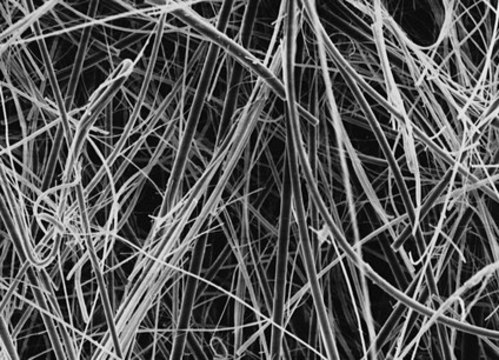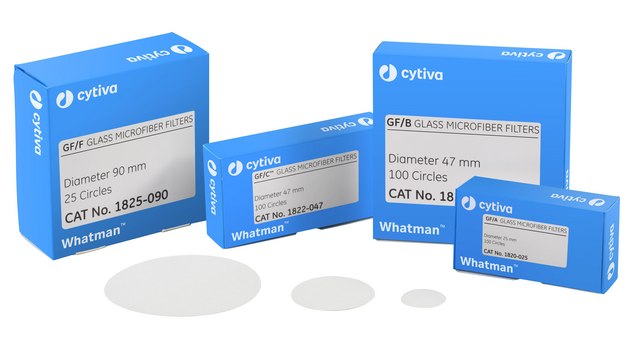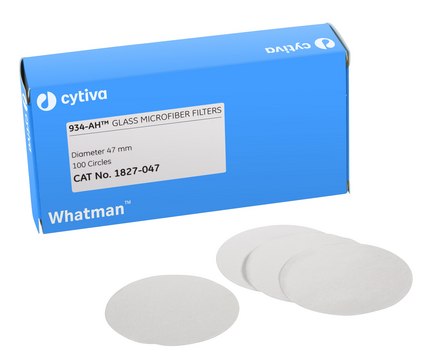推荐产品
物料
glass fiber membrane
plain filter
white filter
Agency
suitable for EPA 1613
suitable for EPA 1621
suitable for ISO 21675 2019
描述
1.0 µm pore size, hydrophilic glass fiber, 47 mm diameter
无菌性
non-sterile
特点
hydrophilic
制造商/商品名称
Millipore
参数
2.2 mL/min-cm2 water flow rate
500 °C max. temp.
过滤器直径
47 mm
厚度
700 μm
重量萃取物
300%
孔径
1.0 μm pore size
90 % porosity
运输
ambient
正在寻找类似产品? 访问 产品对比指南
相关类别
一般描述
概述
Millipore纤维盘式过滤器具有多种流速和处理能力。我们的玻璃纤维过滤器有或没有粘合剂树脂均可用,可以通过EO,伽马或高压灭菌器(121°C,1 bar)进行灭菌。
带有粘合剂树脂的玻璃纤维过滤器:
带有粘合剂树脂的Millipore过滤器具有优异的湿强度,对于定性的分析和预过滤非常出色,尤其是对于严重污染的液体。它们也广泛用于澄清水溶液。
AP15型
•最低纳污能力
•0.2至0.6 µm过滤器推荐的预过滤器
AP20型
•与AP15过滤器相比具有较低的截留率和更高的纳污能力
• 0.8至8.0 µm过滤器推荐的预过滤器
•使用上游来保护AP15型过滤器
AP25型
•增加的厚度与AP20具有相同的截留率和更高的纳污能力
•0.9至8 µm过滤器推荐的预过滤器,尤其是对于蛋白质和严重污染的液体
•使用上游来保护AP15型过滤器
不含粘合剂树脂的玻璃纤维过滤器:
不含粘合剂树脂的过滤器在加热至500°C时可保持其结构完整性而不会失重,因此可用于重量分析以及热气体的过滤。
APFA型
•即使高流速下也保留高效的细颗粒
•建议用于监测废水和收集气体中的悬浮颗粒(例如,烟囱产生的烟雾)
•用于生化应用(例如,收集细胞和过滤蛋白或核酸沉淀物)
APFB型
•与APFA型过滤器相比,在潮湿时具有更高的机械强度和更大的负载能力
•用于液体澄清,细颗粒混悬剂中固体的定量,和闪烁计数
APFC型
•与APFA型过滤器相比,具有更高的截留率,尤其对于细颗粒和微生物的去除
•用于测定饮用水中的总悬浮固体
•用于过滤蛋白或核酸TCA沉淀物以及用于收集细胞和微生物
APFD型
•具有高流量和低截留的厚过滤器
•用于澄清含有大于1.0 µm颗粒物的混悬剂
APFF型
•用于过滤蛋白、核酸或血清沉淀物等极细沉淀物
•建议用于TCLP分析的USEPA方法1311
AP40型
•建议用于标准方法总悬浮固体2540D
•建议用于TCLP分析的USEPA方法1311
•样品过滤后点燃至550 °C(1022 °F)时,保持结构完整性而无失重
•建议用于测定废水和工业废水中的挥发性悬浮物
Millipore纤维盘式过滤器具有多种流速和处理能力。我们的玻璃纤维过滤器有或没有粘合剂树脂均可用,可以通过EO,伽马或高压灭菌器(121°C,1 bar)进行灭菌。
带有粘合剂树脂的玻璃纤维过滤器:
带有粘合剂树脂的Millipore过滤器具有优异的湿强度,对于定性的分析和预过滤非常出色,尤其是对于严重污染的液体。它们也广泛用于澄清水溶液。
AP15型
•最低纳污能力
•0.2至0.6 µm过滤器推荐的预过滤器
AP20型
•与AP15过滤器相比具有较低的截留率和更高的纳污能力
• 0.8至8.0 µm过滤器推荐的预过滤器
•使用上游来保护AP15型过滤器
AP25型
•增加的厚度与AP20具有相同的截留率和更高的纳污能力
•0.9至8 µm过滤器推荐的预过滤器,尤其是对于蛋白质和严重污染的液体
•使用上游来保护AP15型过滤器
不含粘合剂树脂的玻璃纤维过滤器:
不含粘合剂树脂的过滤器在加热至500°C时可保持其结构完整性而不会失重,因此可用于重量分析以及热气体的过滤。
APFA型
•即使高流速下也保留高效的细颗粒
•建议用于监测废水和收集气体中的悬浮颗粒(例如,烟囱产生的烟雾)
•用于生化应用(例如,收集细胞和过滤蛋白或核酸沉淀物)
APFB型
•与APFA型过滤器相比,在潮湿时具有更高的机械强度和更大的负载能力
•用于液体澄清,细颗粒混悬剂中固体的定量,和闪烁计数
APFC型
•与APFA型过滤器相比,具有更高的截留率,尤其对于细颗粒和微生物的去除
•用于测定饮用水中的总悬浮固体
•用于过滤蛋白或核酸TCA沉淀物以及用于收集细胞和微生物
APFD型
•具有高流量和低截留的厚过滤器
•用于澄清含有大于1.0 µm颗粒物的混悬剂
APFF型
•用于过滤蛋白、核酸或血清沉淀物等极细沉淀物
•建议用于TCLP分析的USEPA方法1311
AP40型
•建议用于标准方法总悬浮固体2540D
•建议用于TCLP分析的USEPA方法1311
•样品过滤后点燃至550 °C(1022 °F)时,保持结构完整性而无失重
•建议用于测定废水和工业废水中的挥发性悬浮物
过滤器类型:深层过滤器
过滤器编码:APFB
应用
1.0 μm孔径的玻璃纤维膜过滤器适用于:
- 液体澄清
- 细小颗粒悬浮液中固体的定量
- 闪烁计数
- 微塑料分析级水
- 微塑料分析
- EPA测定可吸附有机氟的方法1621
商品
An overview of microplastics, testing regulations, and filter selection for microplastic sample collection, preparation, and analysis.
相关内容
This page is intended to make it easier to find the consumables you need based on the analytical method you’re using. Methods included on this page come from the EPA, Standard Methods and ASTM.
我们的科学家团队拥有各种研究领域经验,包括生命科学、材料科学、化学合成、色谱、分析及许多其他领域.
联系技术服务部门


